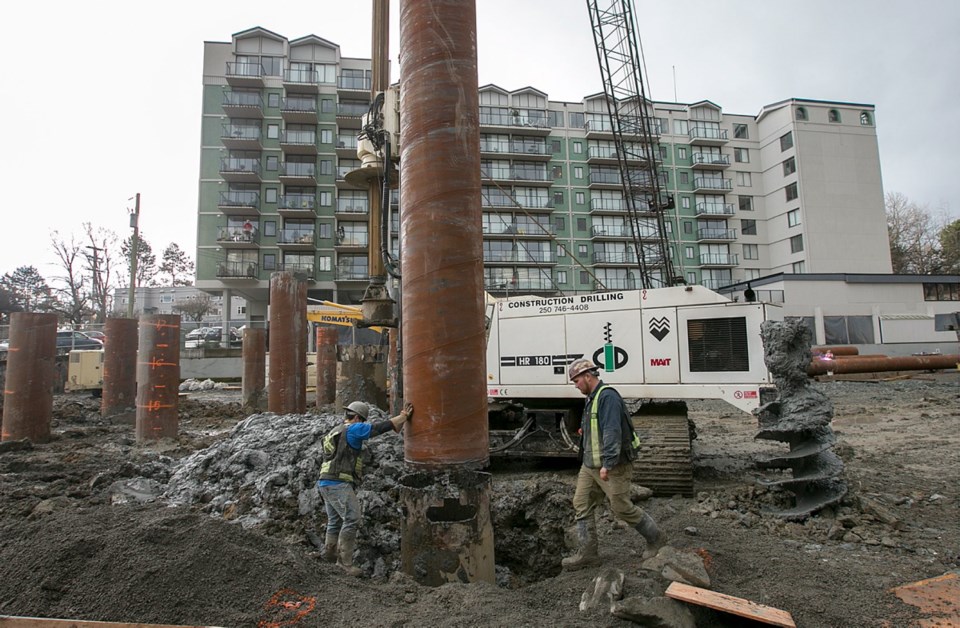Strong demand for housing as a result of a surge in relocating retirees, a buoyant economy and the slow pace of building have left Greater Victoria’s housing market unbalanced and overvalued, said a new report from Canada Mortgage and Housing Corporation.
The quarterly Housing Market Assessment said there is still strong evidence of overvaluation in the region with little evidence of change.
CMHC senior market analyst Braden Batch said this is the fourth report suggesting Victoria’s market is out of balance.
“So far, the demographic trends tell us that there is elevated demand in the market, and we see that in the rising prices and the low [rental] vacancy rate [0.7 per cent]. The supply response to that demand has been slower, but it usually is slower in housing markets,” he said.
As a result of homebuilders last year starting 3,862 new homes — the most recorded since 4,439 were started in 1976 — there are currently more than 4,100 housing units, mainly multi-family, under construction in Greater Victoria. And while CMHC forecasts Victoria will see between 2,200 and 2,500 housing starts this year, that is unlikely to be enough to deal with pent-up demand.
According to CMHC, the demand is coming from increased migration from other parts of Canada and within the province. It said with more retirees expected to come to the region every year that’s not about to slow down.
At the same time, Greater Victoria’s economy is robust, with strong growth in technology, construction, government and tourism drawing younger workers to the city.
“That helps explain the stronger demand we are seeing now in the condo market as new jobs generate first-time buyers, who naturally gravitate toward the most affordable units in the ownership market,” said Batch.
Casey Edge, executive director of the Victoria Residential Builders’ Association, said there is pressure at all levels of the housing market.
“The world and retiring Albertans have discovered this place,” he said. “We saw [the baby boomers] coming 15 years ago, and it took about 10 years for that to materialize, but now it’s happening.
“And as long as the economy remains strong and the millennial group keep getting their careers on track and then looking for homes, pressure will continue to be put on communities like Victoria, which are ideal places to live,” Edge said. “The problem is here we have an [Agricultural Land Reserve] that limits development growth and urban containment boundaries where in many communities means development is discouraged.”
There have been attempts to cool the housing markets in places like Victoria by increasing interest rates and changing mortgage qualification rules, but that might be having the opposite effect.
“It might actually be spurring things on in the short-term,” said Kyle Kerr, president of the Victoria Real Estate Board. “With more measures on the demand side, it just spurs more people to jump into the market now before they feel [homes] might be unattainable due to policy.”
Kerr said real estate agents in the region have seen only a slight dip in demand since the height of 2016, and rising prices don’t seem to be putting people off.
“People will come and pay more for the quality of life and lifestyle,” he said, noting prices will only start to come off the boil when buyers feel they have choices again and that means additional inventory. “But if they really want into the market, they start to pay more.
“Until we see more creative housing that adds more density, we will continue to see that pressure. Those municipalities that reject density and don’t add supply into their neighbourhoods are going to continue to have house price affordability problems.”



